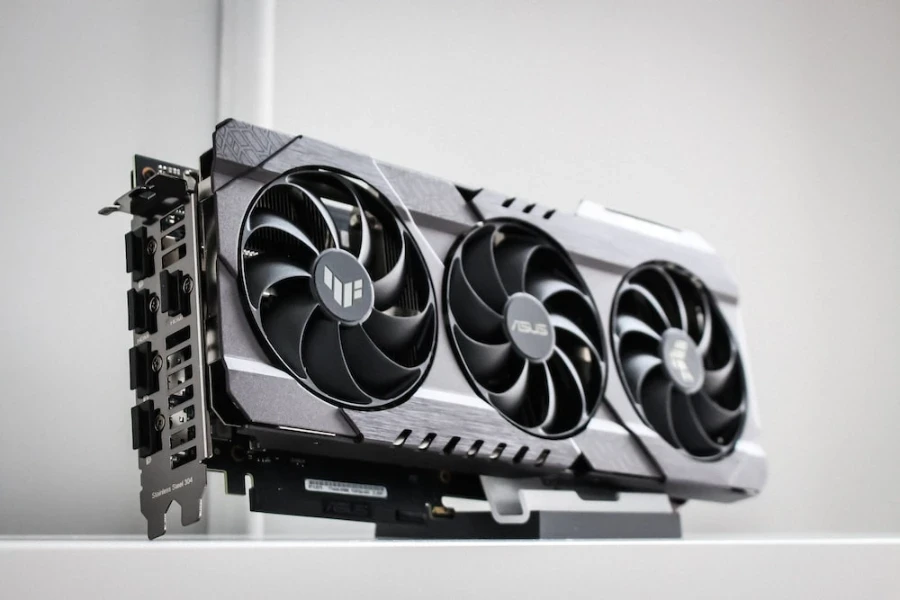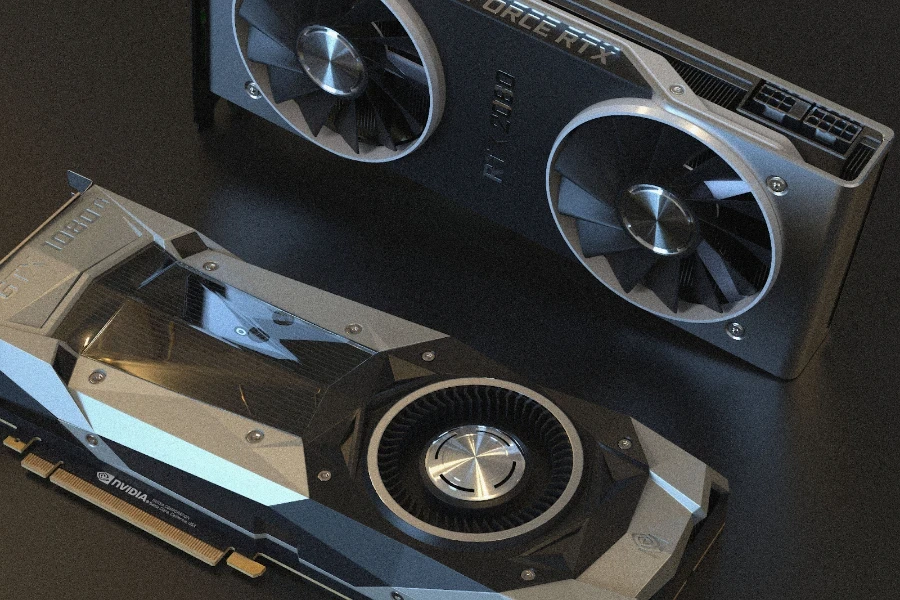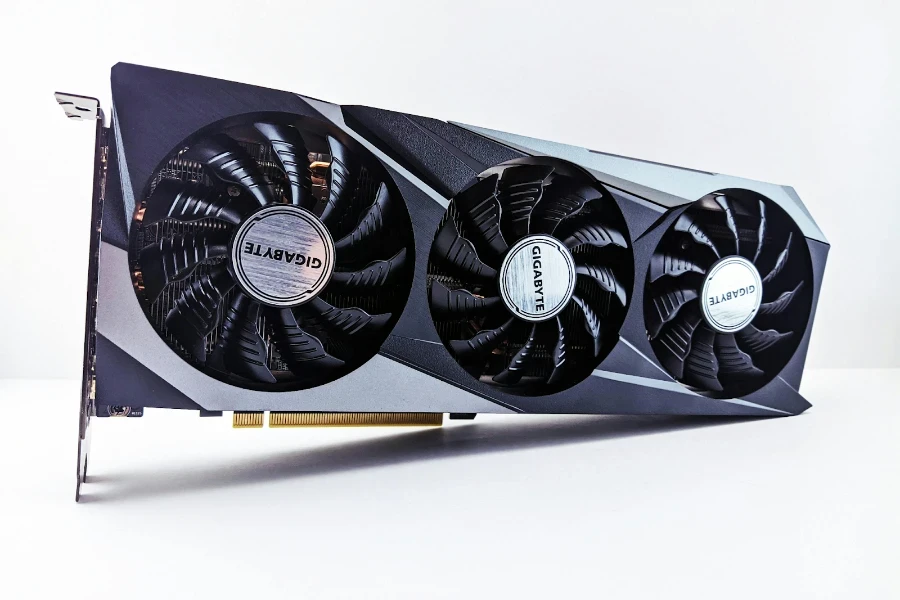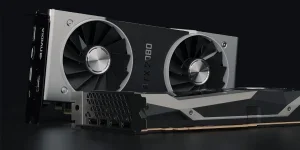Buying a graphics card is one of the most exciting parts of PC building. Combined with the processor, GPUs have the strongest impact on custom or pre-built PCs, meaning it’s a high-priority purchase—videos, gaming, and editing. The GPU handles all of it.
Graphics cards offer different performances and features, so businesses must iron out a few considerations before entering the market or boosting their inventory. This article will reveal the secrets of offering the perfect GPU to custom PC enthusiasts in 2024.
Table of Contents
Overview of the global graphics card market
Everything worth considering before entering the graphics card market
Final words
Overview of the global graphics card market
Experts estimated the global graphics card market crossed the US $40 billion mark in 2022, and they expect nothing but stunning growth for the industry. According to their predictions, the market will experience a 25% compound annual growth rate (CAGR) from 2023 to 2032.
The market owes its impressive growth potential to the rising demand for high-memory GPUs globally, the evolving demographics in the gaming industry, and the increased use of integrated GPUs in portable electronic devices.
Asia-Pacific is the leading regional market, as experts predict it will account for US $180 billion by FY 2032. Google Ads data also backs up the graphics card market’s popularity. According to reports, search interest in GPUs rose by 10%, from 550,000 in October to 675,000 in November 2023.
Everything worth considering before entering the graphics card market
NVIDIA vs. AMD vs. Intel
GPUs often fall into two categories: integrated and discrete graphics. Although integrated graphics often come with processors on SoCs (system-on-a-chip), discrete GPUs are independent components consumers can install in their PC towers.
For discrete graphics, retailers can choose from three GPU giants: NVIDIA, AMD, and Intel. While NVIDIA and AMD top the charts with an onslaught of cards, Intel offers a more limited selection. Here’s a look at what each manufacturer has to offer:
NVIDIA
NVIDIA dominates the market with GPUs for PCs and laptops, offering a range from affordable to premium models. Known for superior GPU performance, NVIDIA targets the high-end sector with products like the RTX 4090 but also provides midrange options.
While their current lineup includes the RTX 30 and 40 series, some older generations, like the GTX 1650, are still available with impressive performance. More importantly, NVIDIA’s GPUs excel in gaming, content creation, and AI-related tasks.
Additionally, NVIDIA outshines the competition in handling ray tracing and introduced Deep Learning Super Sampling (DLSS), with the latest RTX 40-series featuring an enhanced DLSS 3 for significant frame rate boosts in games.
AMD
While AMD pales compared to NVIDIA’s 80% market share, they do a great job at preventing NVIDIA’s market monopoly. And AMD is often more budget-friendly than its NVIDIA counterparts.
Remember that the latest generation, the Radeon RX7000 series, is still evolving, but the RX 6000 lineup remains a solid choice for cost-effectiveness. Recent AMD GPUs also offer improved ray-tracing capabilities.
In addition, AMD’s direct competition to NVIDIA’s DLSS is the Fidelity Super Resolution (FSR), and it’s in its second version (FSR 2.0). Unlike NVIDIA, AMD doesn’t restrict FSR 2.0 to one GPU generation and even offers cross-vendor support.
Intel
Intel may be a beast in the processor market, but it’s a smaller player in GPUs. Regardless, the manufacturer introduced the ARC Alchemist discrete GPU lineup in 2022, featuring the Arc A380, A750, and A770.
While not aiming to outperform NVIDIA and AMD, Intel focuses on competitive pricing and performance per dollar. Despite being last-gen, Intel’s GPUs offer the most budget-friendly alternatives.
Interestingly, the Arc series performs well in newer games, with ongoing improvements for DirectX 9 and 11 titles. Surprisingly, Intel surpasses AMD in ray tracing for comparable GPUs. Its upscaling feature, Intel Xe Super Sampling (XeSS) (available exclusively on Arc Alchemist GPUs), akin to DLSS and FSR, enhances frame rates without significant image quality loss.
Resolution

When gamers search for GPUs, one of the things they keep in mind is if they want to play at 1080p, 1440p (2K), or 4K. Also, other users consider resolution important, as higher resolutions translate to more screen real estate. Thankfully, businesses can offer various GPUs for each resolution requirement.
Casual users usually don’t need anything more than 1080p—it helps them avoid unnecessary expenses on the GPU and monitor. So, retailers with such consumers can stock up on GPUs like the AMD Radeon RX7600 or NVIDIA GeForce RTX 3060—they offer decent performances at 1080p resolution.
But gamers leaning towards 1440p will need something slightly more powerful. In that case, focus on GPUs similar to AMD’s RX 6700 XT or RX 6800 XT from the previous generation. Sellers can also offer Intel’s Arc A770 for budget-conscious consumers.
NVIDIA also has something to offer users looking for 1440p gaming. Businesses can capitalize on the RTX 4070 Ti and RTX 4070 as they can handle such resolutions comfortably. Even the previous-gen RTX 3070 Ti can dish out impressive performance at 1440p.
Venturing into 4K gaming requires powerful GPUs like NVIDIA’s RTX 4080 and RTX 4090—the RTX 4070 Ti can handle it with some compromises. AMD offers choices like the RX 6900 XT, RX 6950 XT, and the newer RX 7900 XTX and 7900 XT for 4K gaming.
Budget

Going through the various GPUs available excites PC builders, but it won’t matter how good they are if they don’t fit into their budget. Most consumers have budget constraints and would rather pair a decent processor with a solid graphics card—not the most powerful.
Here’s a table showing the different budgets and the graphics cards businesses can offer to such consumers:
| Budget | Benefits and graphics card type |
| Under $300 | Perfect for 1080p graphics Can play most AAA games without max settings Low power consumption GPUs in this budget include RTX 3060, RTX 4060, GTX 1650, RX 6600, RX 6600 XT, RX 7600, Arc A750, and Arc A770 |
| Under $1,000 | Perfect for 1080p and 1440p graphics GPUs above $500 can handle 4K gaming GPUs around $400: RTX 4060 Ti and AMD RX 6700 XT GPUs around $500: RX 6800 XT GPUs around $600 and above include RTX 4070, RTX 4070 Ti, RX 7900 XT, and RX 7900 XTX |
| Over $1,000 | Currently, they offer the best GPU performance Only two GPUs are available for this budget: RTX 4080 and RTX 4090 |
VRAM

VRAM is another specification gamers focus on when purchasing GPUs, so businesses must consider it before stocking up on these products. Usually, the more VRAM GPUs have, the better—but with things evolving fast, what’s sufficient by today’s standards may end up struggling in the next few years.
For instance, the RTX 4060 Ti has a decent 8GB of VRAM, but it’s not enough to handle recent releases like Cyberpunk 2077, which requires a minimum of 12GB of VRAM. Hence, the safer investment would be on GPUs with more VRAM, like the RTX 4070 (12 GB) or the RX 6800 XT (16 GB).
Final words
Choosing by manufacturer alone isn’t the best way to enter the GPU market. Instead, businesses must invest in GPUs based on their consumers’ needs and how much they’re willing to pay for them.
Gamers looking for the best possible performance with a large budget will love NVIDIA. But those seeking the perfect blend of performance and affordable pricing won’t go wrong with AMD. Lastly, Intel is the go-to for budget-oriented builds.
Regardless of consumers’ needs and budgets, the GPU market will have something for everyone in 2024!




